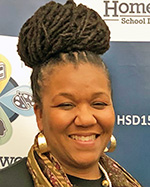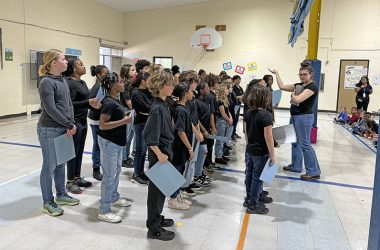Things are not what they once were.
I was in a meeting with a new family in the district, when I realized education is in a true moment of growth. As I explained to our new parent the special services we would be providing her child, her response was, “Wow, we didn’t have any of these resources when I was younger!”

I was immediately struck by her words and thought, special education has, indeed, changed over time.
I began my career in Homewood School District 153 as a special education teacher almost 20 years ago. Students with Individualized Education Programs (IEP’s) had few education environmental options if they needed support.
Identified students fell into categories: Resource students, meaning they were given supplemental teaching/review and tools to support their skill acquisition; instructional students sent to the special education classroom for full instruction in reading and/or math; or students that went to therapeutic schools to receive their education. All amazing options for students to receive a great education.

However, with the onset of response to intervention (RTI) and new legislation, the state began to monitor school district practices and work with districts to help identify ways to have more inclusive opportunities for students with special needs. This was also the moment I moved out of the classroom and became the Director of Student Support Services.
With lenses of advocacy and the thought of my former students in mind, our district worked to have co-teaching opportunities for students, the expansion of daily living skills classrooms to reduce the number of therapeutic day placements, along with increased support staff to meet needs. We worked to create spaces where all students can learn.
Presently, we work to include and advocate for the needs of students. We write plans to ensure they are learning in the most appropriate setting based on their presenting needs. A student’s need will dictate their classes such as math, reading and language arts, and even how we structure their specials (art, music, etc. …). We look at what level of support is needed to gain general education access. We do our best to program for a child’s needs behaviorally and emotionally — special education programs for the whole child. Students with special needs are a part of almost every classroom in our school district.
I chose to be a director so that I could advocate for students in a different way and effect change for all students. I believe lifelong learning and education for all is a right, and teachers/educators as the experts are key to unlocking greatness within. Students with special needs are inherently part of the equation.
As a school district, we have worked hard to create spaces of inclusivity and the concept has become culture. Our families know they can call with concern, but also trust that we are doing the best for their children.
I have seen a shift in families who felt intimidated by the thought of special education, to now asking for services and the team finding that a child’s diverse need does not adversely impact their education.
That is the hallmark of determining whether special services are warranted.
One phrase that has always stuck with me was voiced by a former special educator: “Special education isn’t magic, but it can be magical.”
Note: Melanie T.B. Mandisodza is director of Student Support Services for Homewood District 153.

